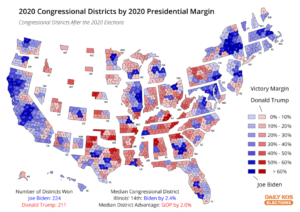As a result of Georgia’s new voter suppression laws, “Some have called for Major League Baseball to respond by pulling its all-star game out of Atlanta in July, just as the NBA took the 2017 all-star game out of North Carolina after that state enacted laws limiting anti-discrimination protections for the LGBTQ community,” Damien Cox writes at The Toronto Star.” According to one estimate the NC boycott costed the state $2.75 billion in lost tourism, special events and conventions. Cox notes also, “With respect to the Masters, the National Black Justice Coalition has already called for a boycott….“Professional golf should not reward Georgia’s attacks on democracy and voting rights with the millions of dollars in revenue that the tournament generates and the prestige it brings to the state,” coalition executive director David Johns said.” Back in 1990 the NFL informed Arizona that, if they wanted to host the 1993 Super Bowl, they had to enact a holiday in honor of Martin Luther King, Jr., as did nearly all other states. Two years later, the Arizona MLK holiday was enacted, after the state lost substantial tourist revenues as a result of the boycott and Stevie Wonder, the Doobie Brothers and Public Enemy cancelled performances in the state. In 2016 more feature films were produced in Georgia than in any other state. Georgia risks losing billions of dollars if the film industry begins relocating movie and TV shows as a result of protests against its voter suppresion laws. More discussion about the boycott at #BoycottGeorgia twitter feed.
From Terry Canefield’s “Georgia’s ‘Jim Crow’ voter suppression bill is now law. Here’s how Democrats can fight back” at nbcnews.com: “The provisions that make it harder for people to vote and the nonsensical provisions can be overridden by federal legislation. The Constitution specifically gives Congress the power to regulate federal elections: Article I, Section 4 gives it the power to make or alter rules for conducting federal elections. The 14th Amendment and 15th Amendment prevent states from discriminating based on race….Because so many of these restrictive provisions disproportionally affect minority voters, lawsuits are already being filed challenging the law….Georgia already has a well-organized voter support team, Fair Fight, headed by Stacey Abrams. State law allows for the casting of ballots and the tabulation of ballots to be observed by members of both parties. American courts demonstrated in 2020 that, even those with extremely conservative judges, they are not willing to overturn the will of the people in an election. Massive turnout and a clear victory are the best antidotes to attempts to suppress the vote….The Republicans are also on notice: Citizens are not likely to vote for the party that passes mean-spirited and anti-democratic laws. In the words of Cook Political Report editor Dave Wasserman, the Georgia Republicans may have “just handed Democrats their best turnout tool for 2022 & beyond.” After all, when a party outlaws giving water to voters stuck in long lines, what does it say about their values?”
Regarding statehood for Washington, D.C., Geoffrey Skelley writes at FiveThirtyEight: “Older polling has found that at least half of Americans oppose statehood, and that hasn’t really changed much. What is notable, though, is how much question wording can move the numbers — perhaps a sign of how we can expect the two sides to frame this debate….Two recent polls asked straightforward questions about D.C. statehood (some form of “Do you support or oppose granting statehood?”) and found the public pretty evenly divided. Forty-nine percent of Americans told Fortune/SurveyMonkey in mid-January that they favored statehood while 45 percent were opposed. For the pro-statehood movement, this is an improvement from some other nonpartisan polling on the topic in 2020, but only slightly. Further complicating the picture, just last week RMG Researchfound that 35 percent supported statehood compared with 41 percent who opposed it. Hardly what one would call a clear picture of public support. It’s important to note, however, that both pollsters asked a simple yes or no question, meaning there’s little reason to think respondents were primed to answer a certain way.”
New York Times columnist Thomas B. Edsall explores data concerning the polarization of American voters and congress, and notes that “Morris Fiorina, a political scientist at Stanford, argues in a series of essays and a book, “Unstable Majorities,” that it is the structure of the two-party system that prevents the center — the moderate majority of American voters — from asserting their dominion over national politics: Given multiple dimensions of political conflict — economic, cultural, international — it is simply impossible for two internally homogeneous parties to represent the variety of viewpoints present in a large heterogeneous democracy ….Inevitably, Fiorina writes, Each party bundles issue positions in a way that conflicts with the views of many citizens — most commonly citizens who are economic conservatives and culturally liberal, or economically liberal and culturally conservative, but also internationalist or isolationist-leaning positions layered on top of other divisions….In Fiorina’s view, polarization has been concentrated among “the political class: officeseekers, party officials, donors, activists, partisan media commentators. These are the people who blabber on TV /vent on Facebook/vilify on Twitter/etc.”….This process effectively leaves out “the general public (a.k.a. normal people)” who are “inattentive, uncertain, ambivalent, uninvolved politically, concerned with bread-and-butter issues.” Edsall reviews data showing agreement on issues among many Republiucan and Democratic voters, but concludes, “The country’s conservative party is wedded to an extreme position — with an astonishing 59 percent of Trump voters convinced as recently as March 5-9 that Joe Biden is not a legitimately elected president, according to a YouGov poll….When one party sinks that far into delusion, cross-party cooperation is ruled out, and the kinds of centrist policies that many voters say they want become an impossibility.”




